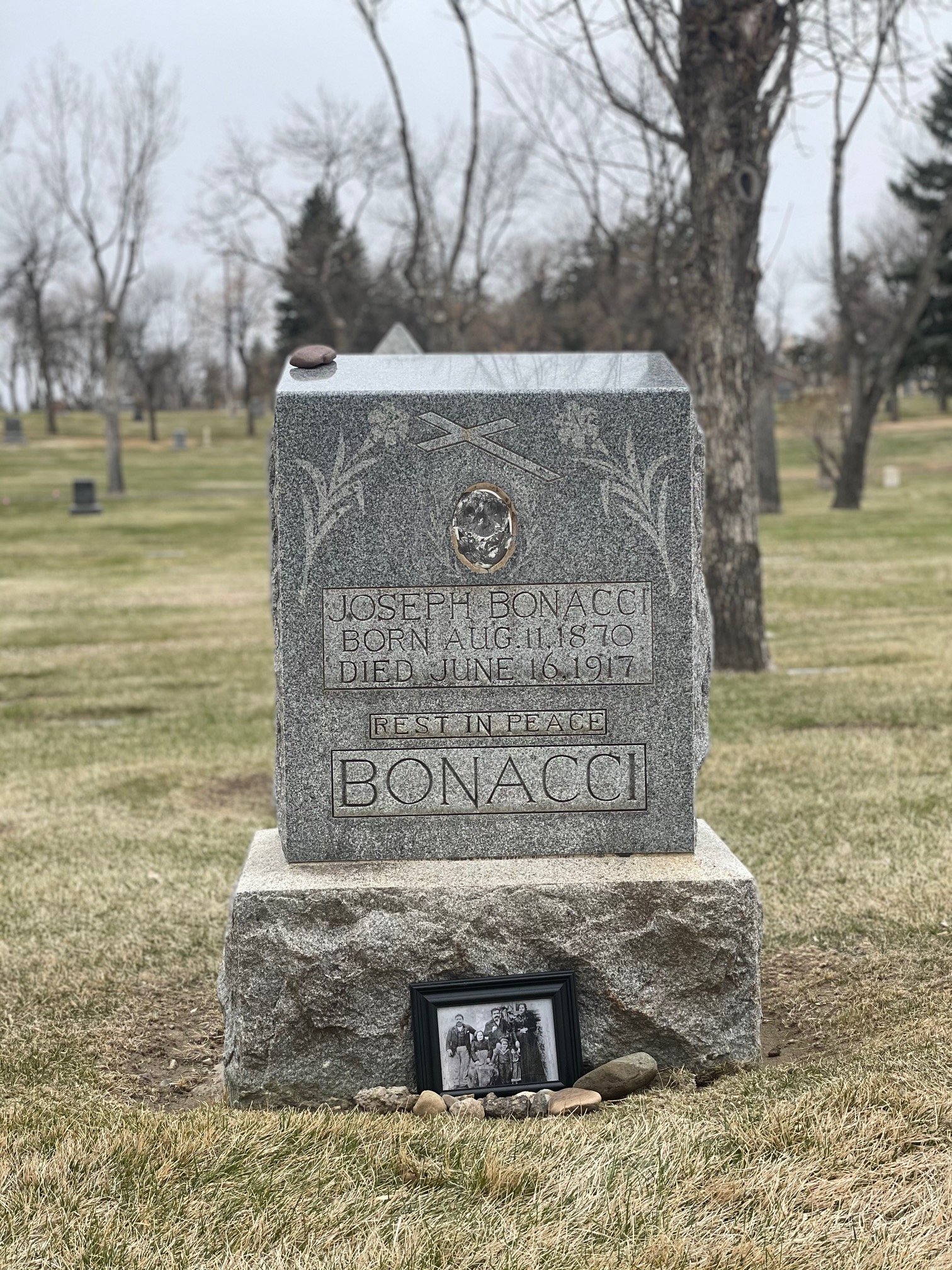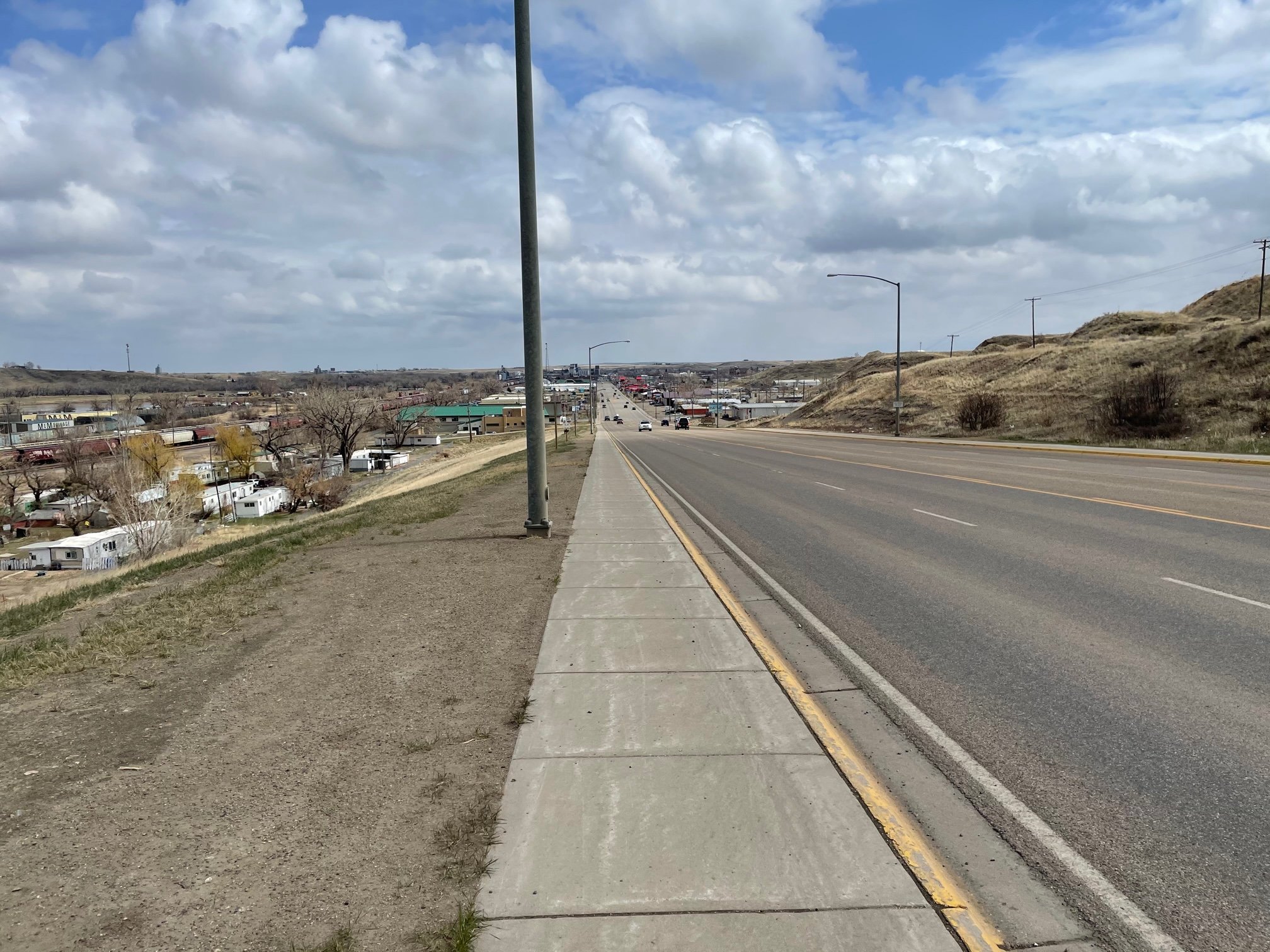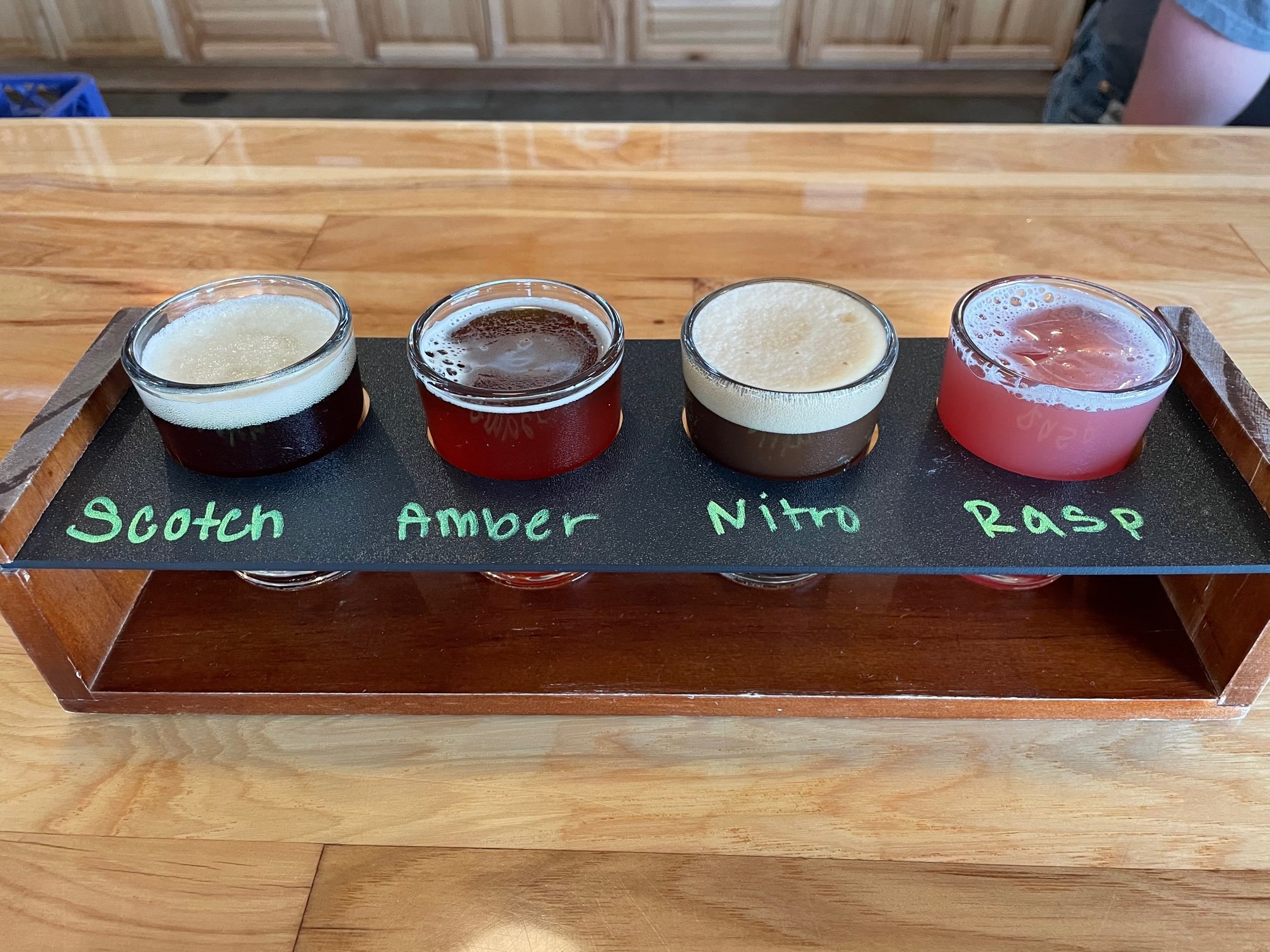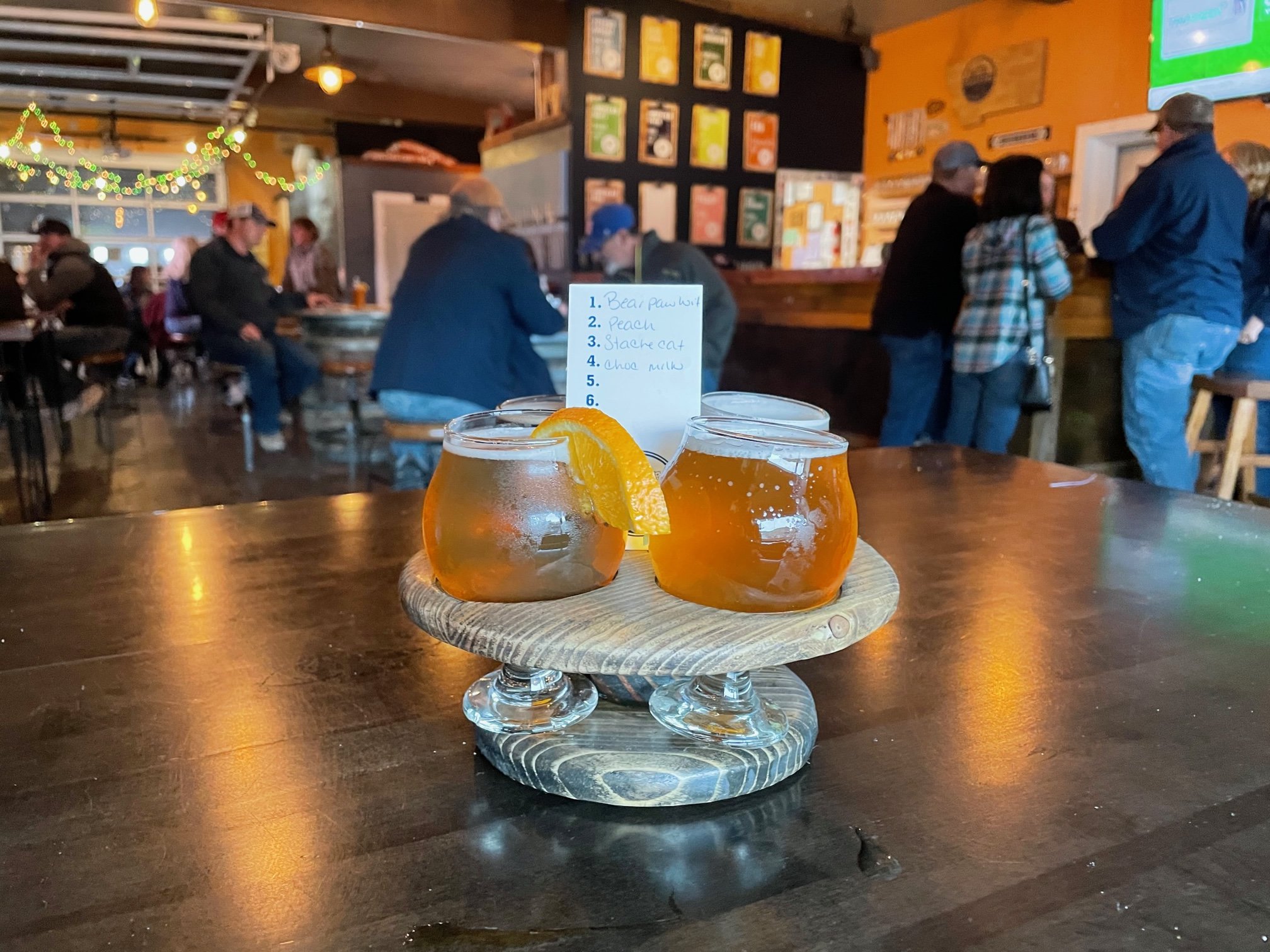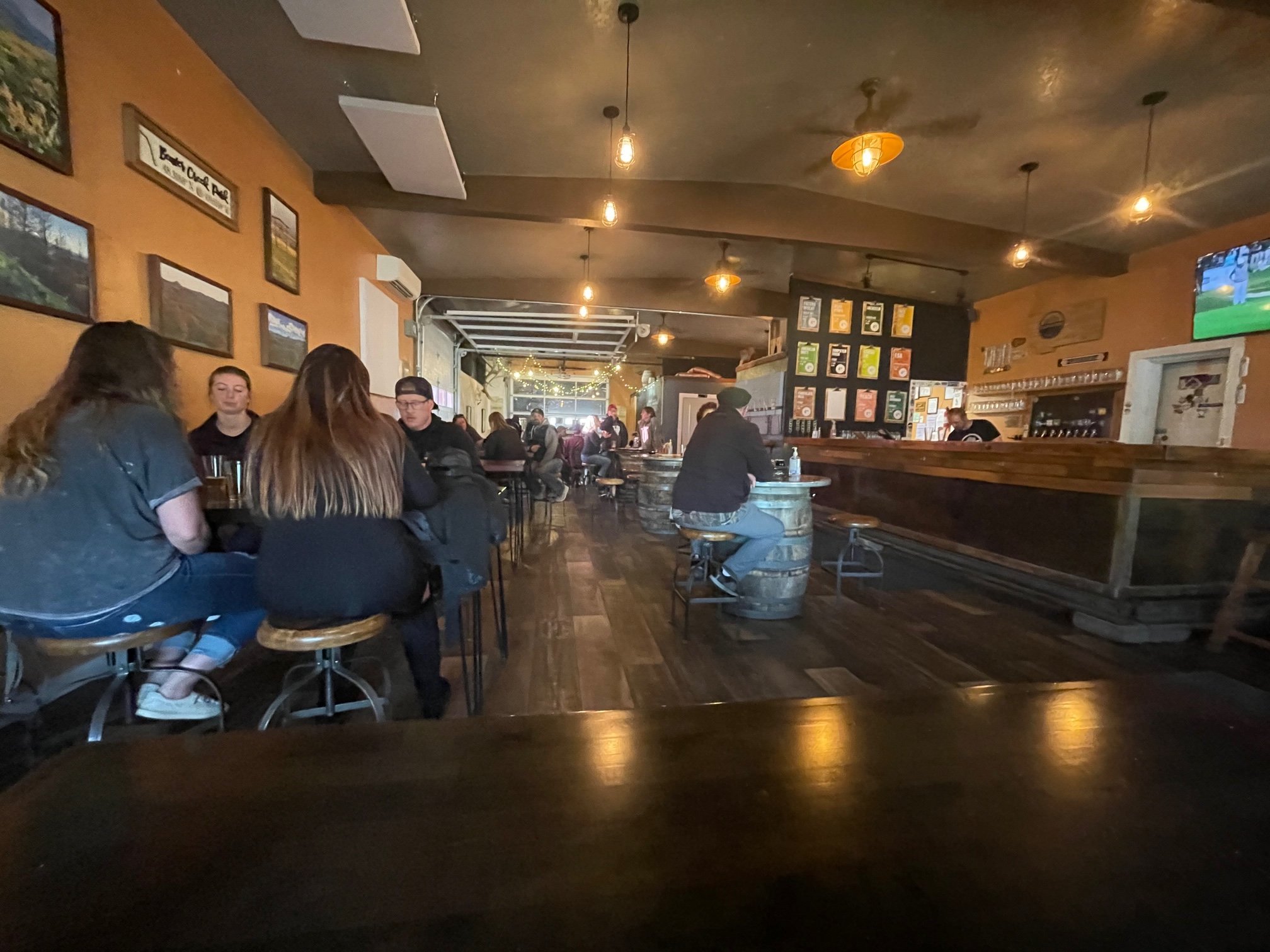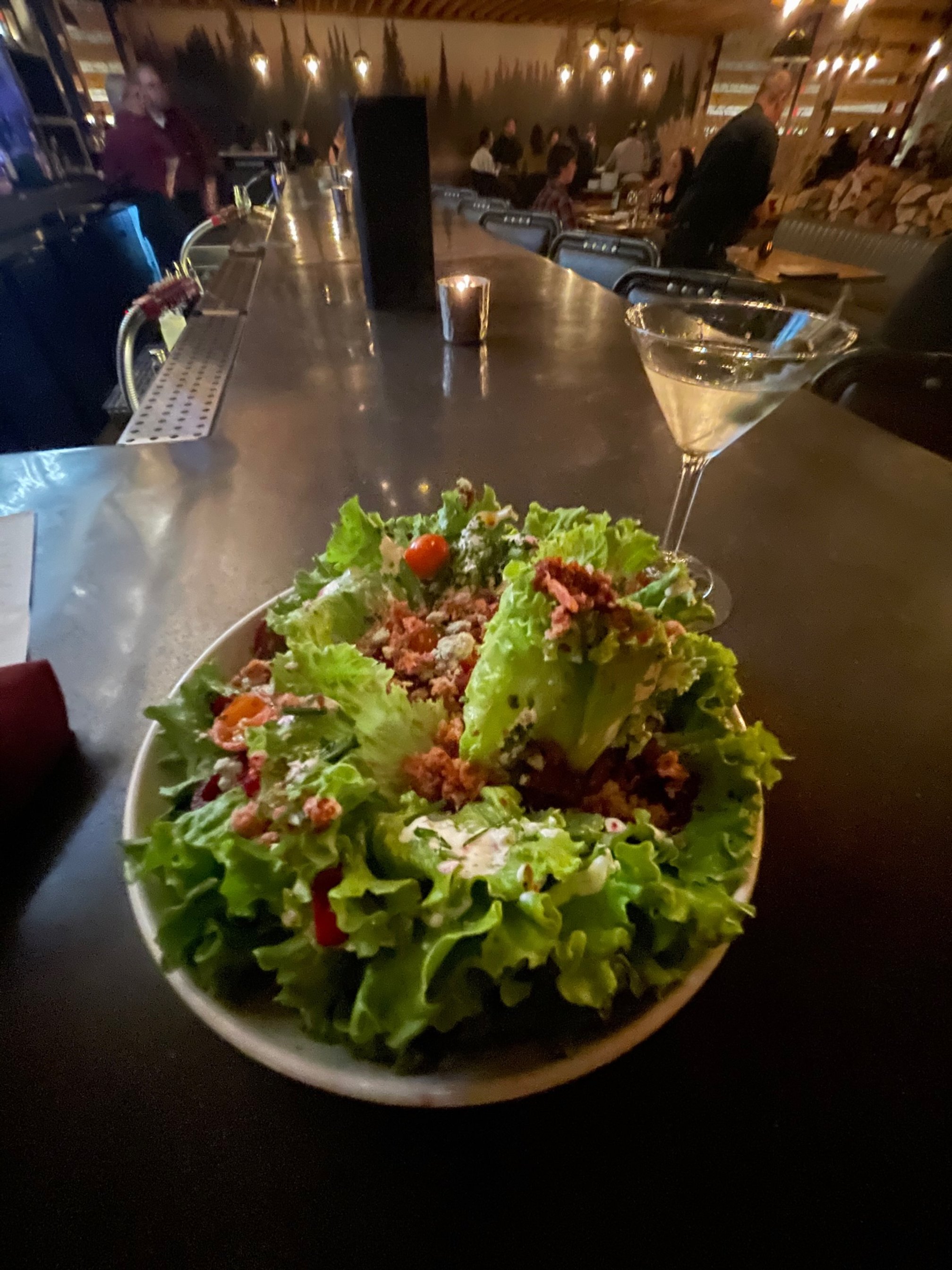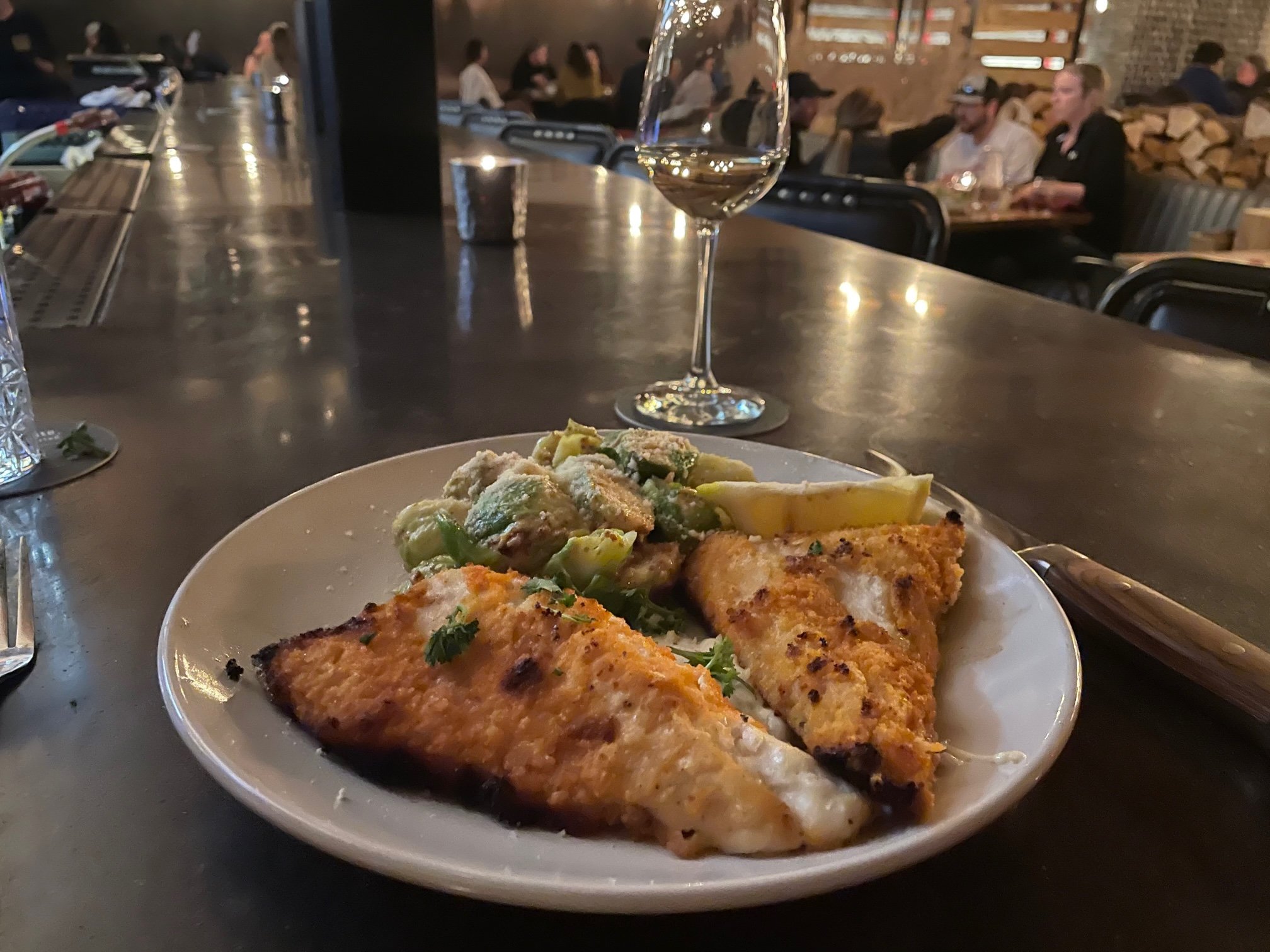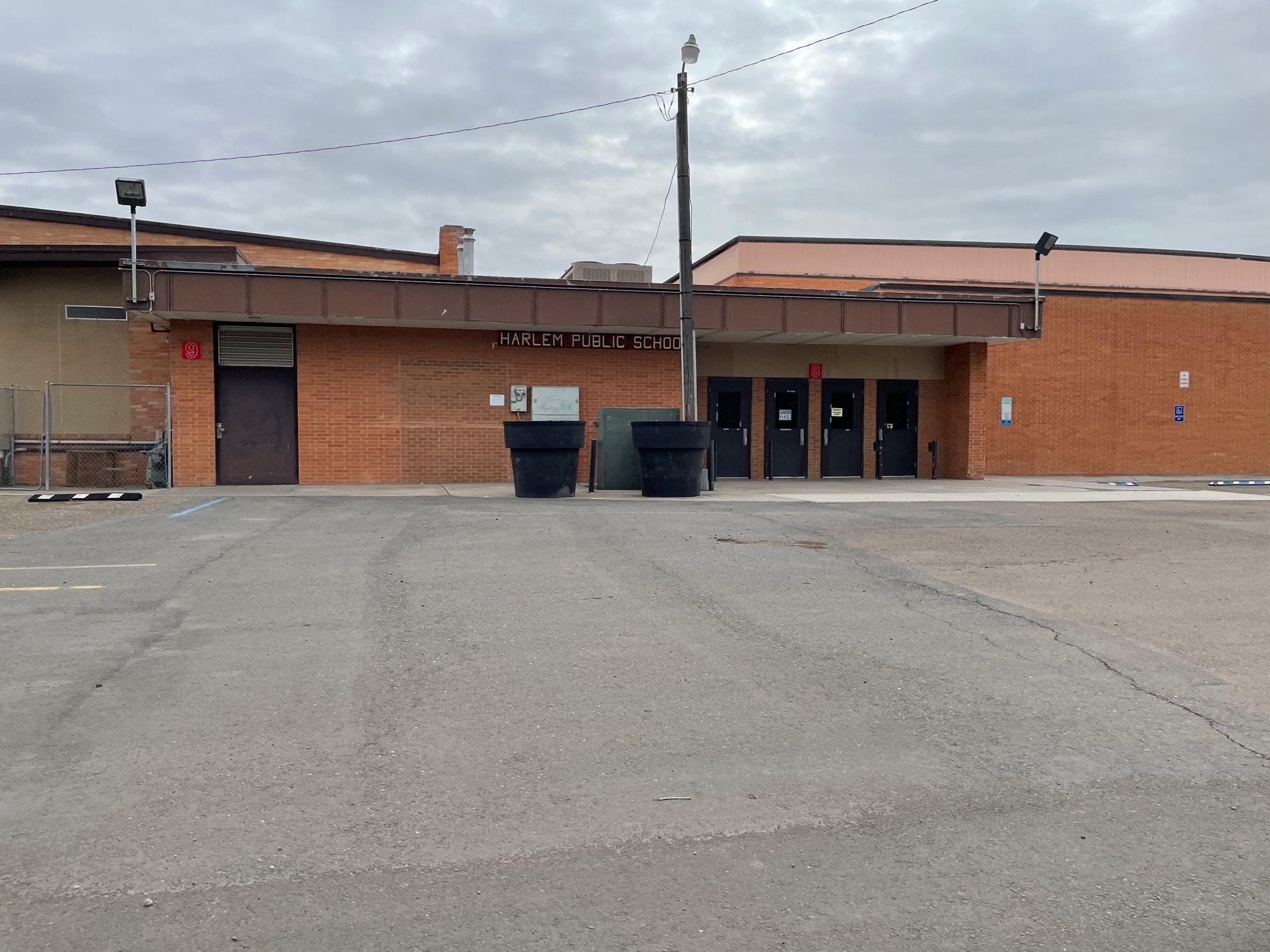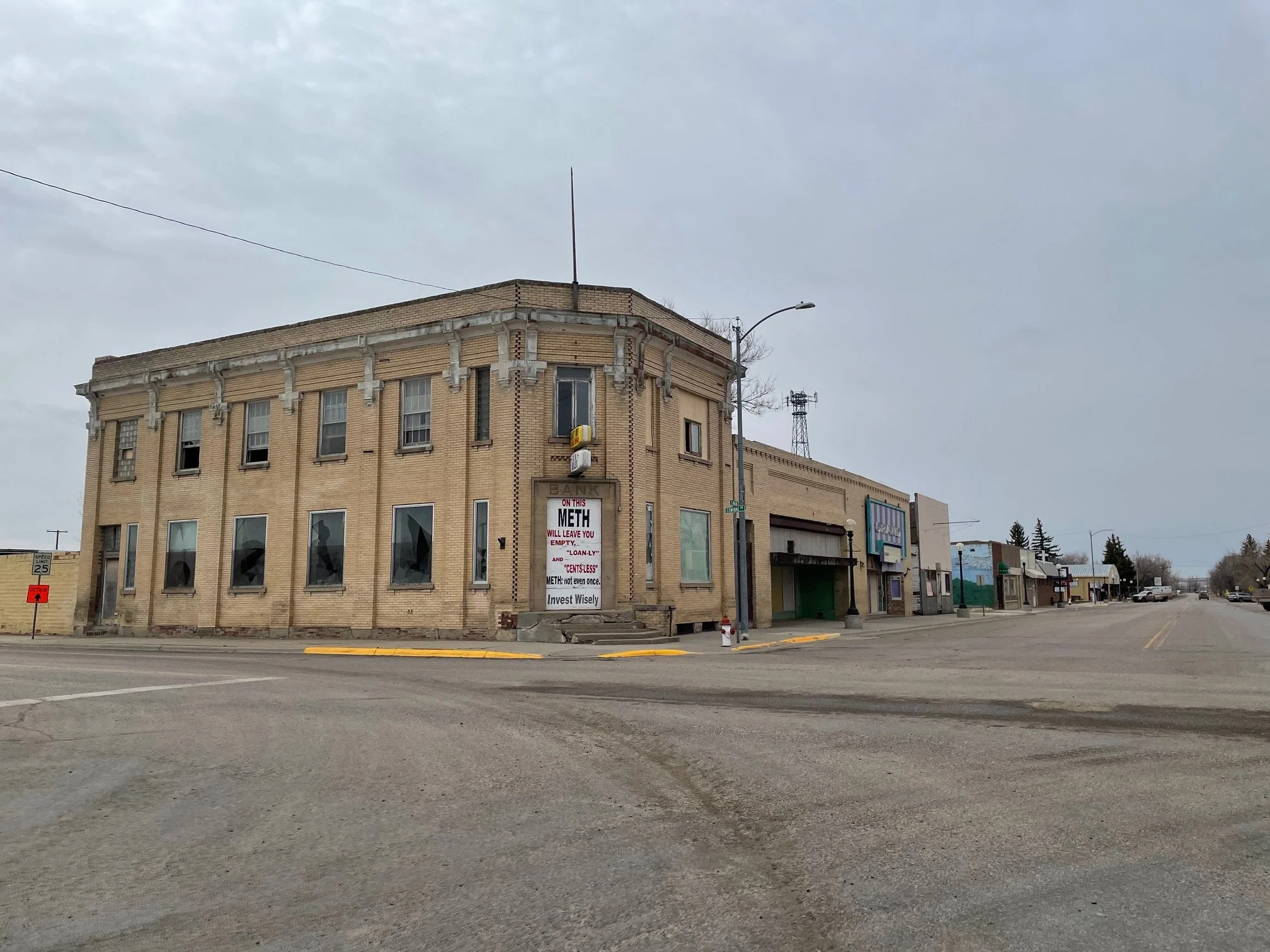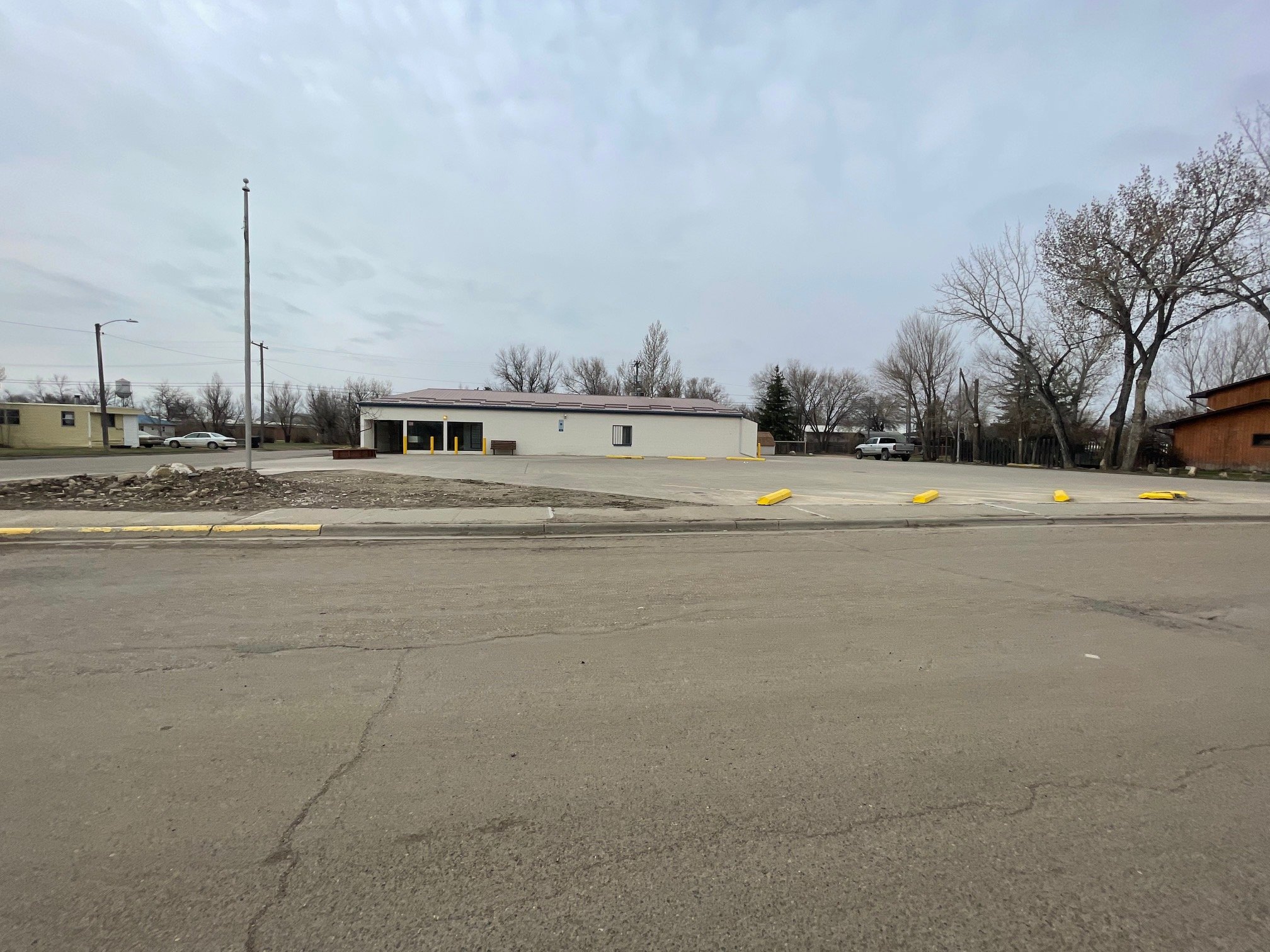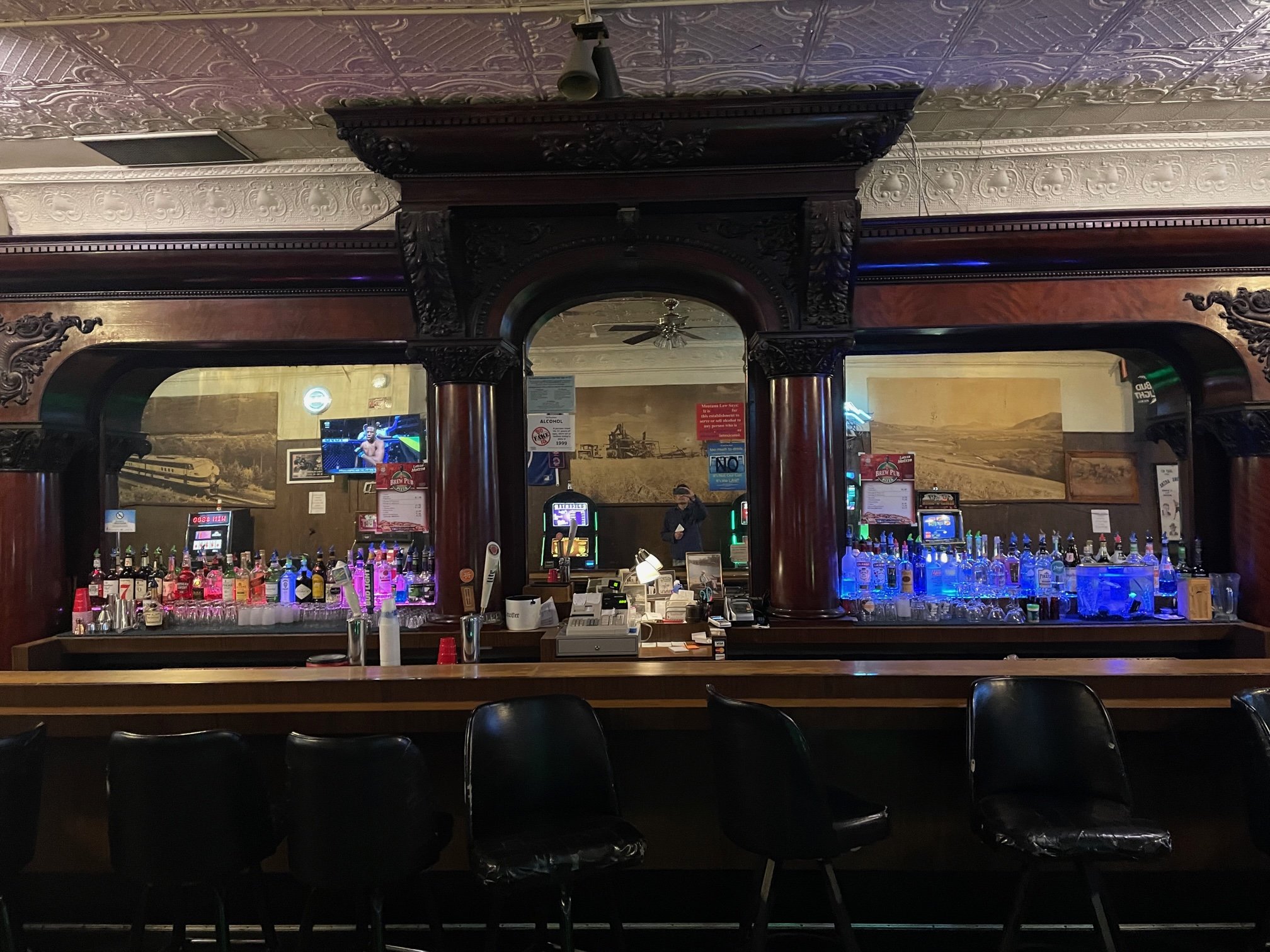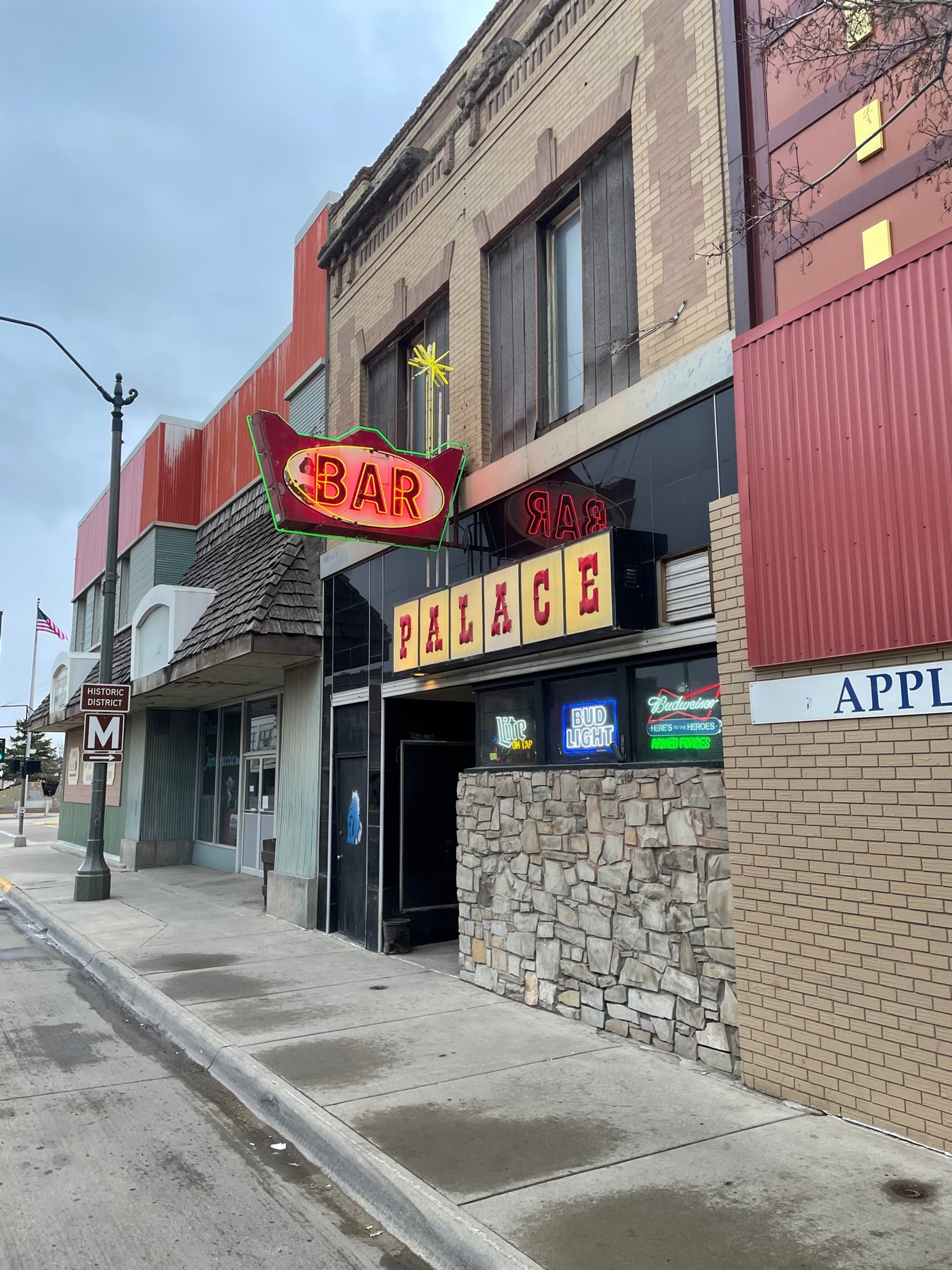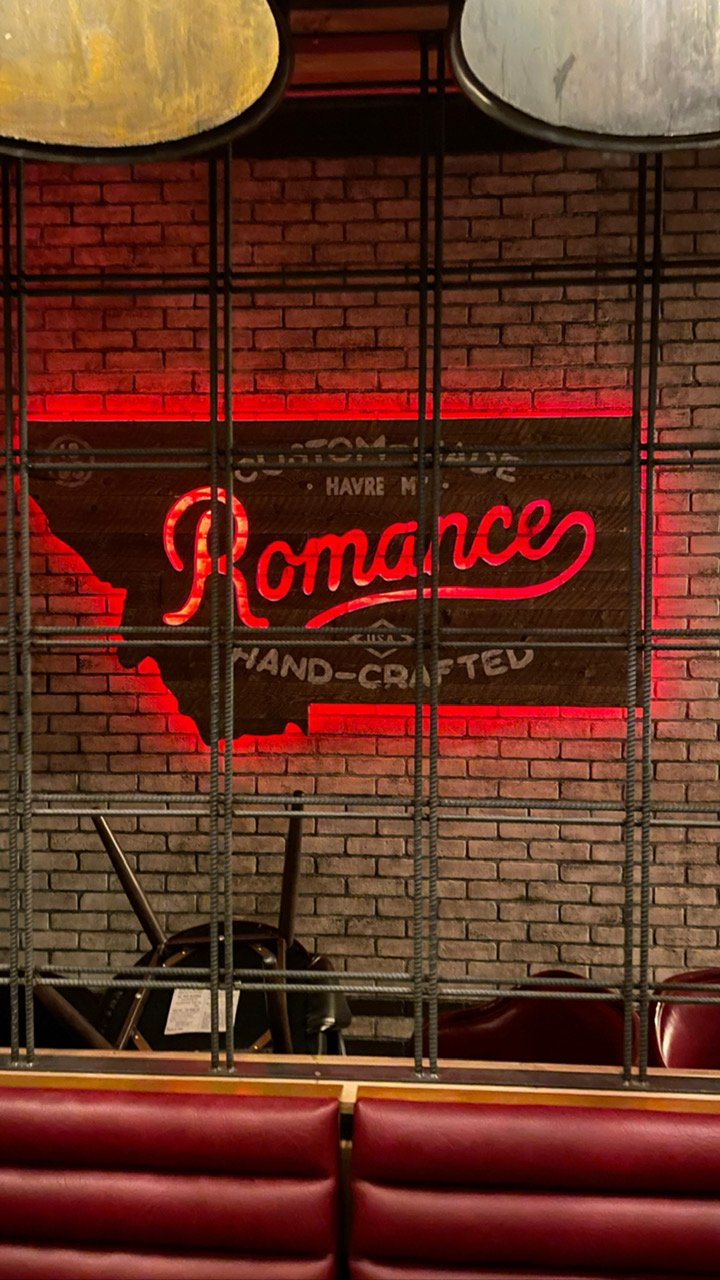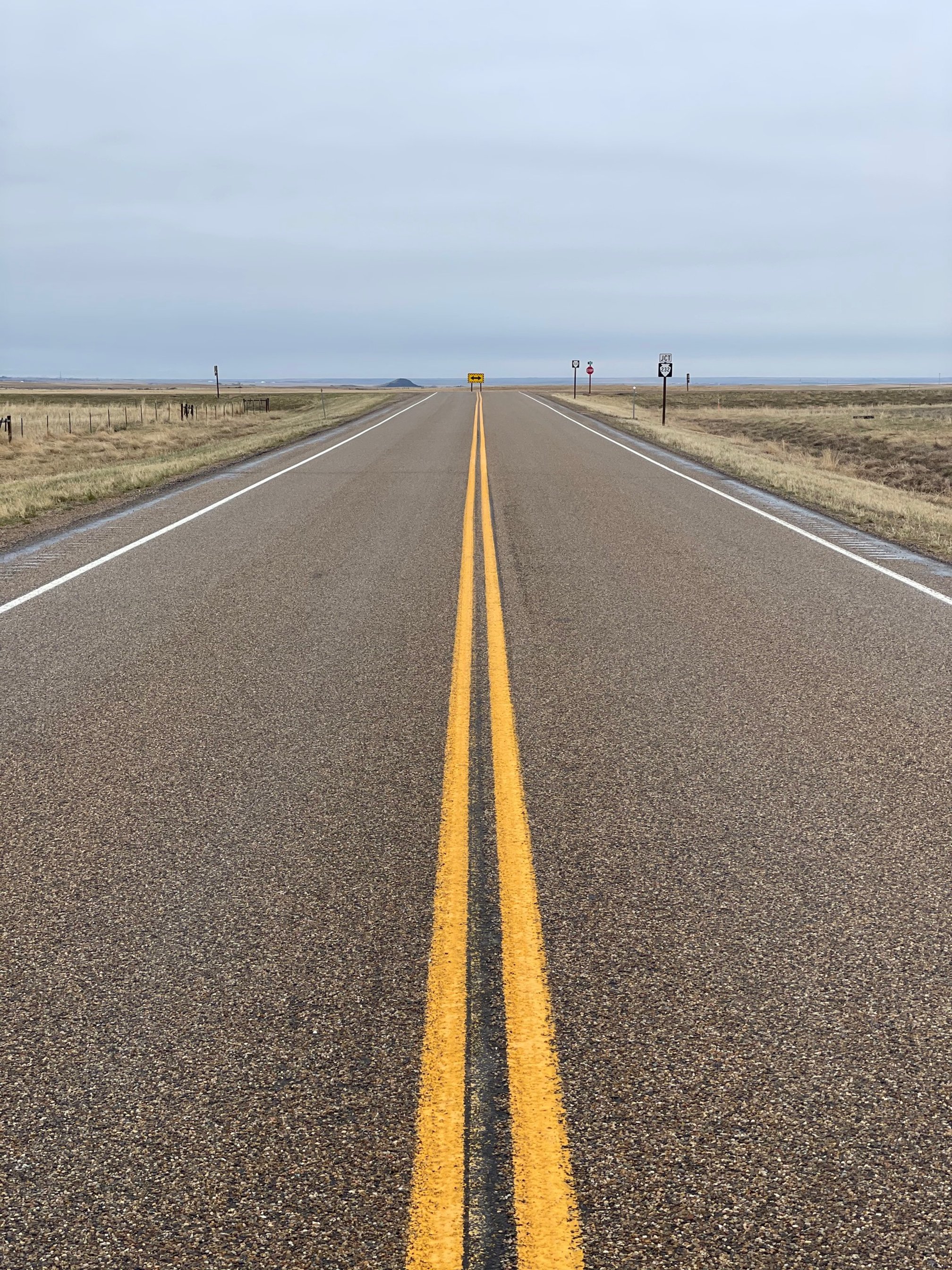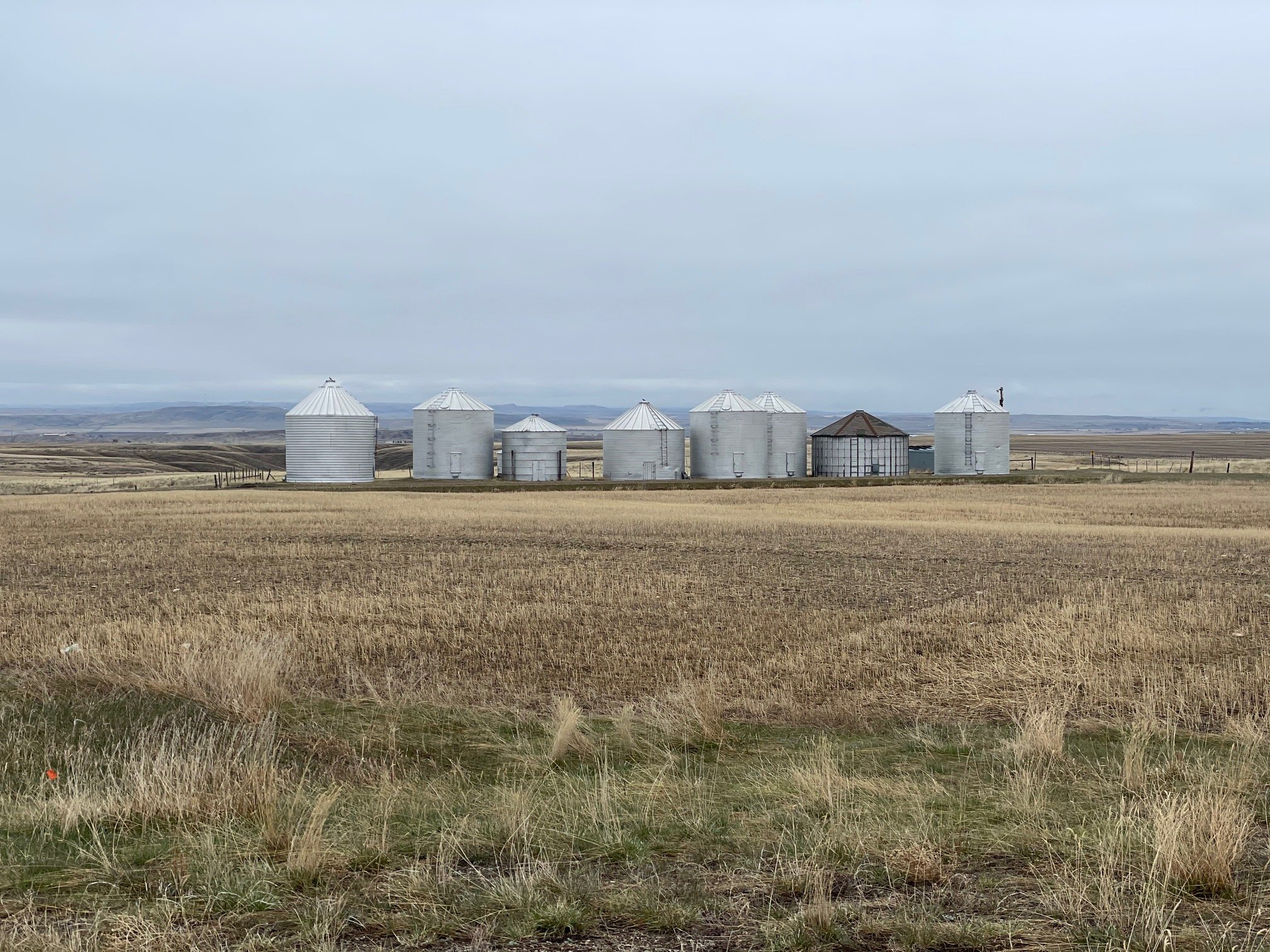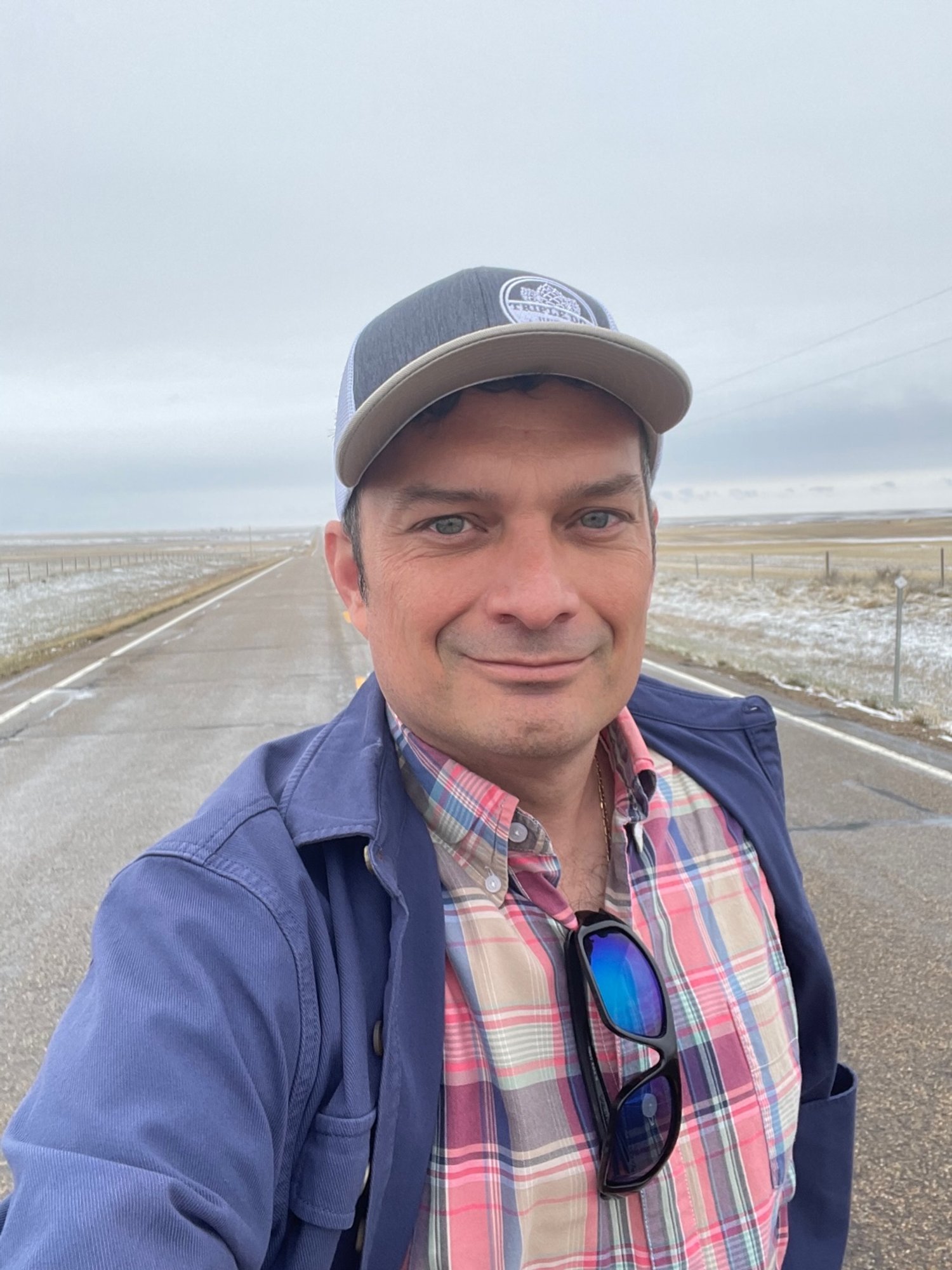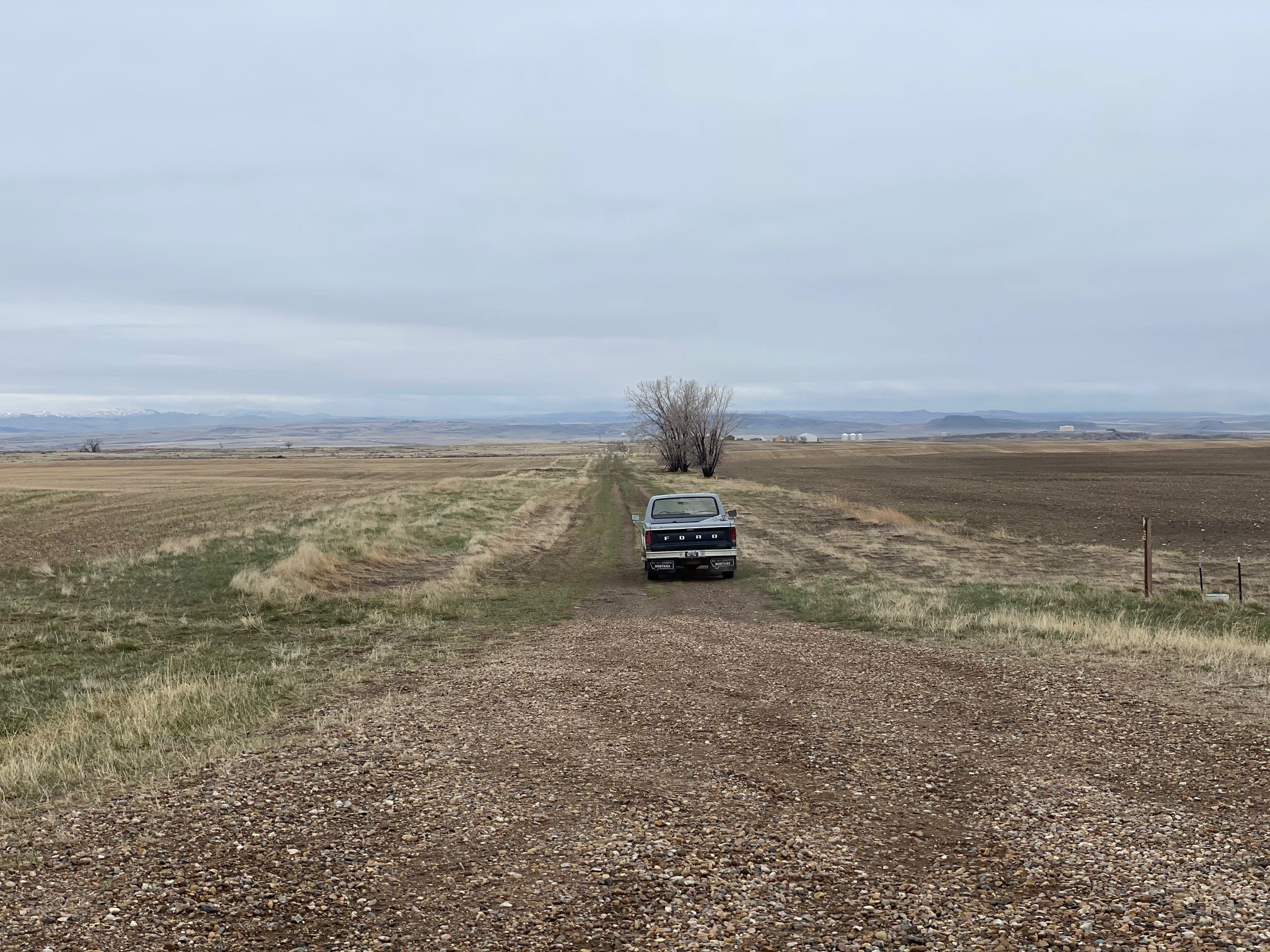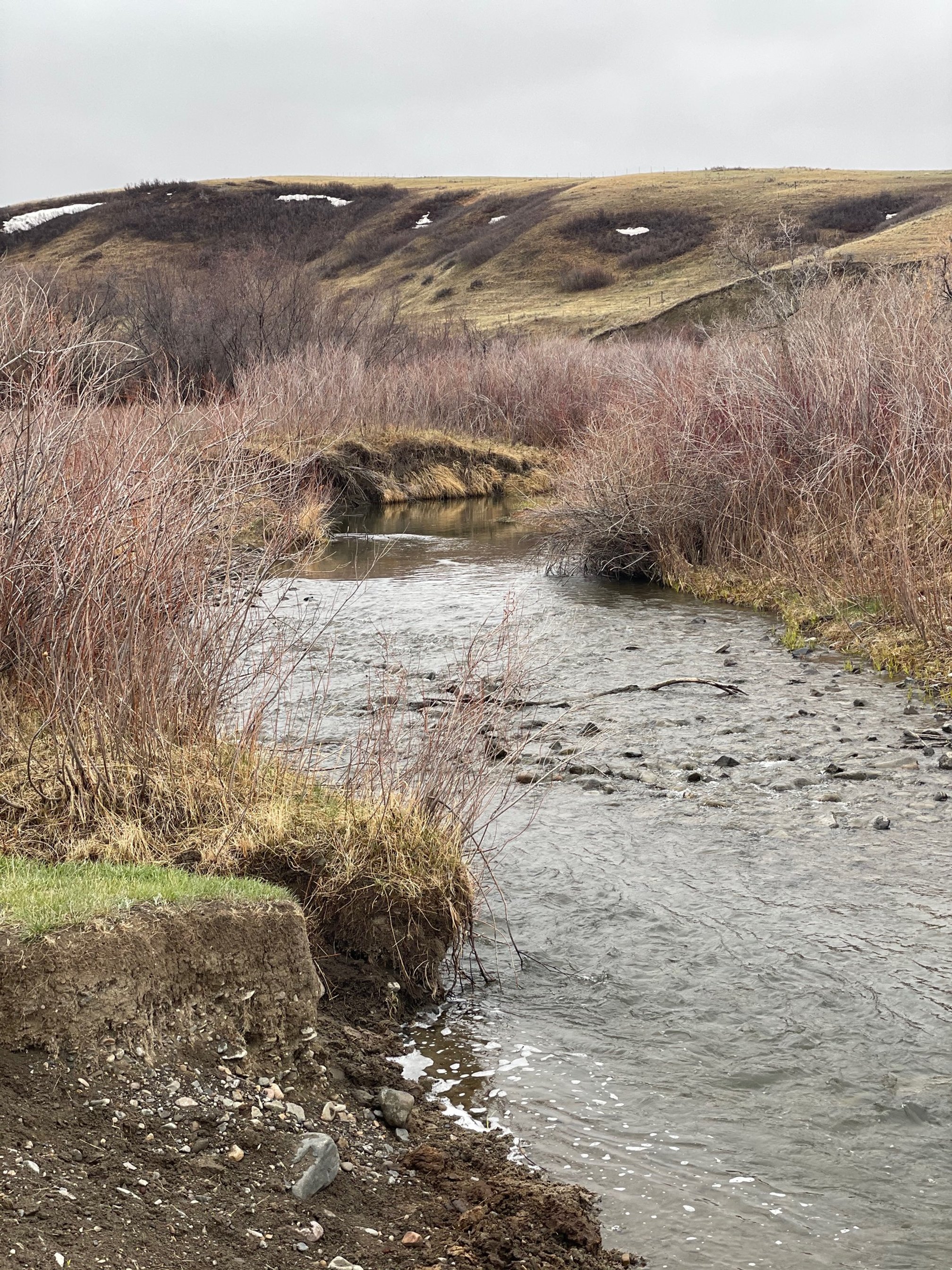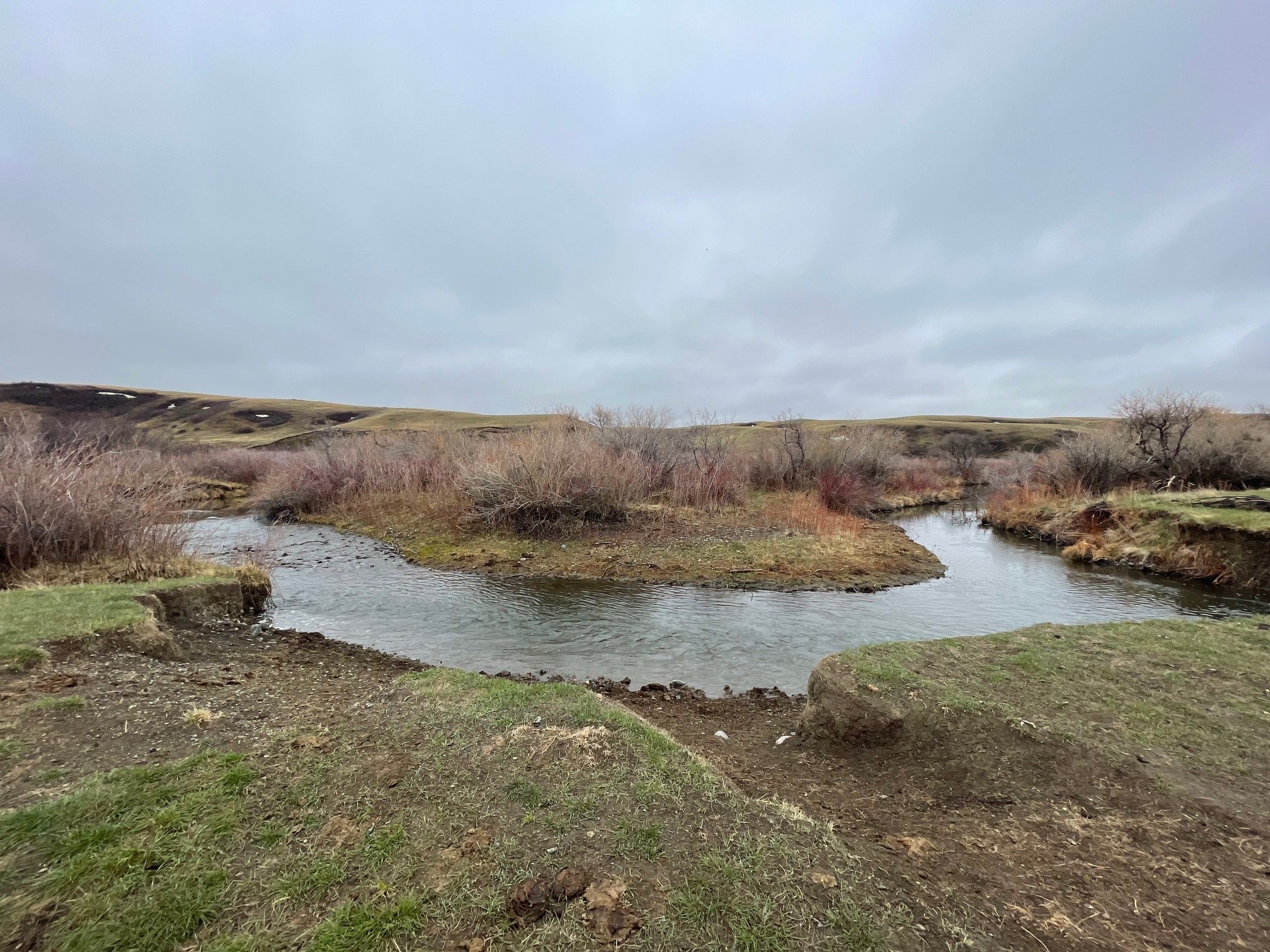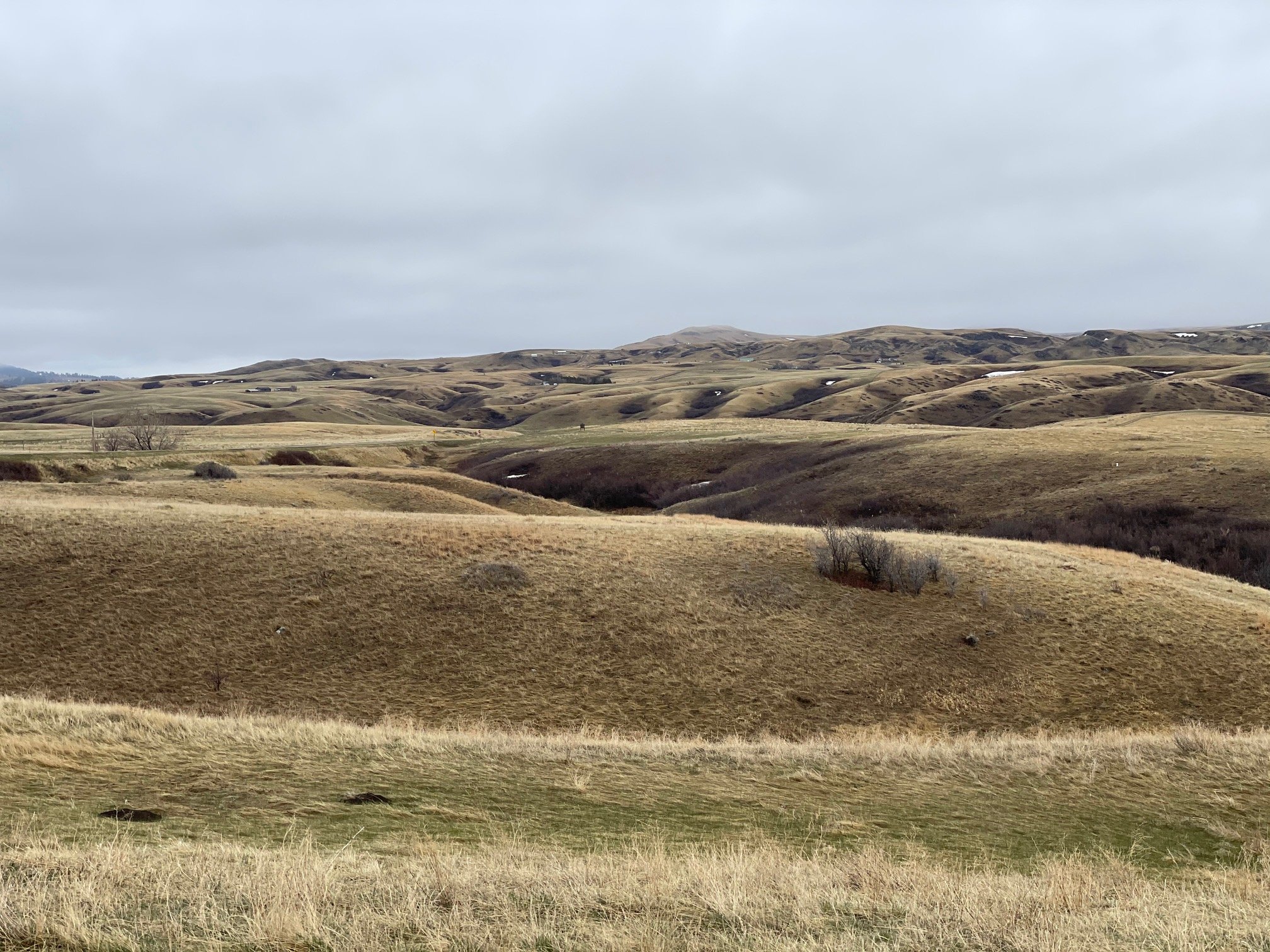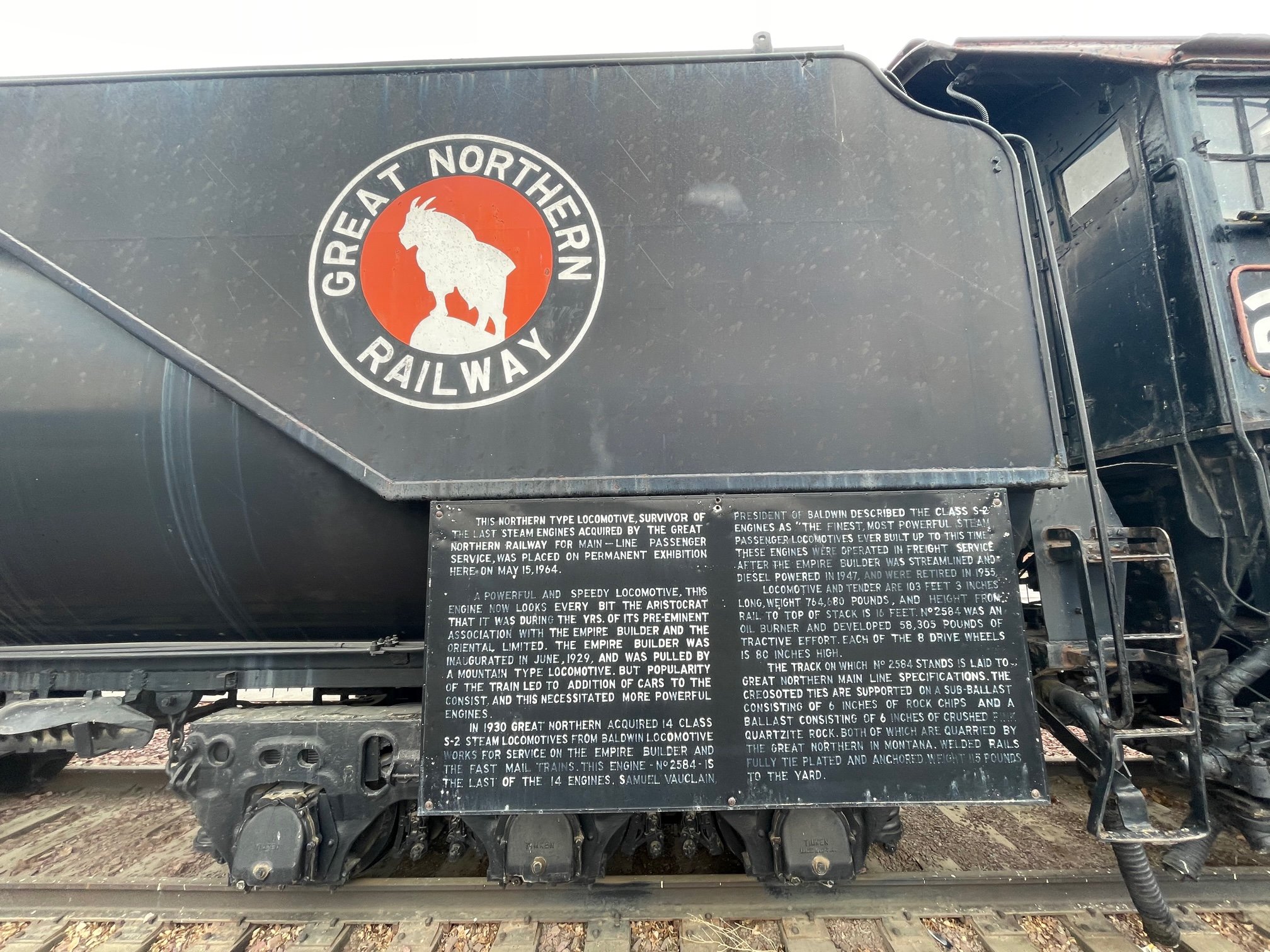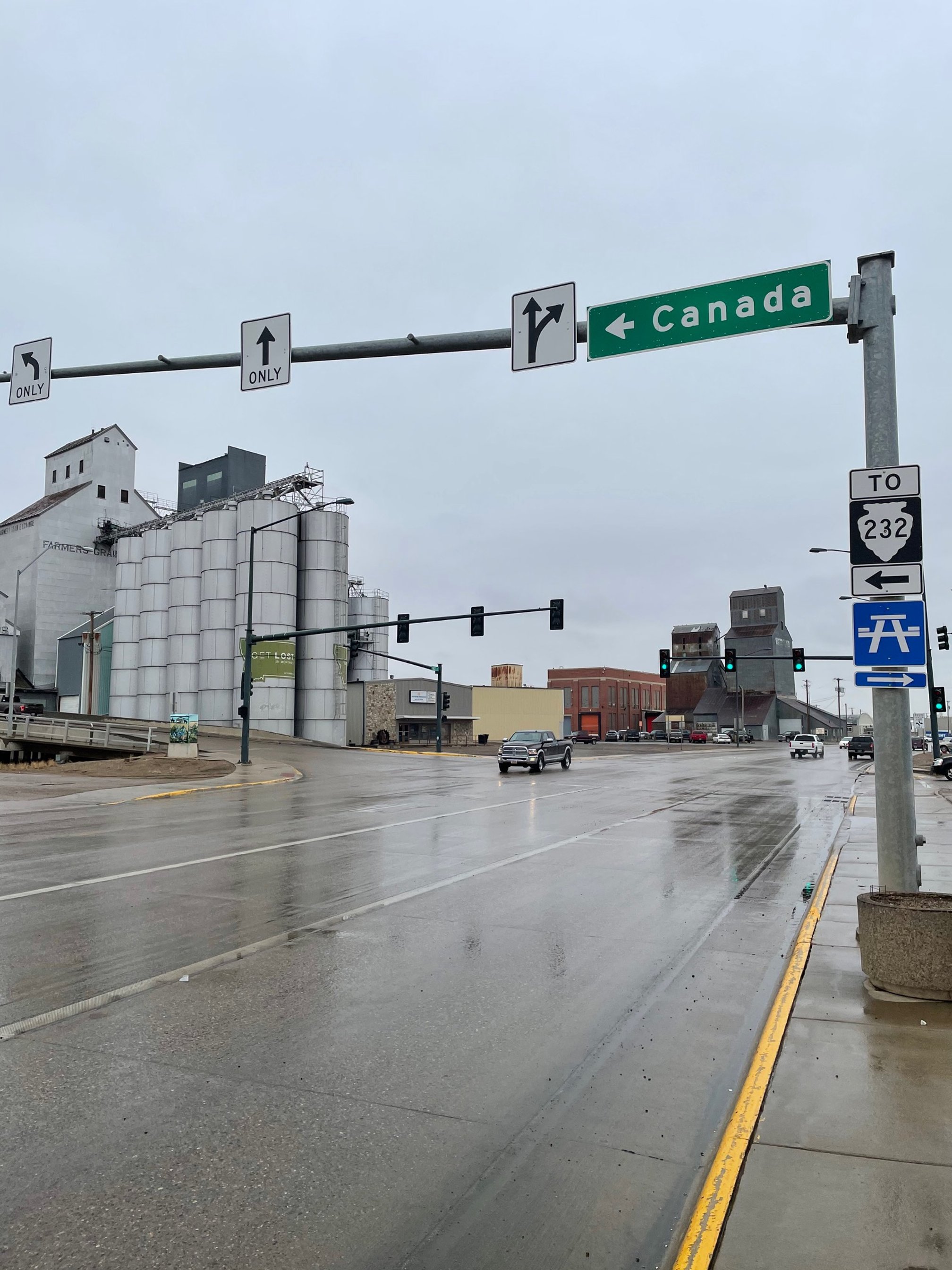My great great grandfather died on the railroad in 1917. I took a train to visit him.
Havre, Montana, had been on my mind since Ancestry.com led me to a photo of the grave of my great great grandfather, who, according to my relatives, had died there while working on the Great Northern Railroad.
When 2021 presented me with another opportunity for a cross-country train trip, I know I wanted to travel the Great Northern route — the Empire Builder — and I wanted to stop in Havre, not only to visit my great great grandfather’s grave, but also to drive to the town of Harlem, where my grandmother and her brothers grew up during the Great Depression.
You can read my account of the Empire Builder here. My 48 hours in Havre are documented below.
• • •
Snow flurries greeted me as I stepped off the Empire Builder in Havre.
I assumed that I would find cabs waiting or that Uber or Lyft operated here, but finding none, nor an answer from my car rental company, I began walking through the flurries to the Best Western Plus, about a mile walk through downtown with an uphill stretch at the end.
I had studied this town’s layout for weeks, strategically planning where I would eat and drink — and then, where I would stay, based on proximity to eating and drinking locations.
As I passed Three Dog Brewery and Bow and Marrow, my preferred watering hole and restaurant, a woman from the car rental agency called me back with apologies and said she would immediately pick me up. We decided to meet outside my hotel, and so after the walk uphill and a quick check-in, I was off to the rental car agency for an even quicker check-in process.
My first stop was Calvary Hill Cemetery, just a few miles from the car rental agency. Thanks to findagrave, I had the block and lot numbers without having to visit the office, and I found Joseph Bonacci almost immediately. The headstone was tall and in very good shape, except for the deterioration of what might have been an oval photograph on the front.
I was likely his first visitor in a century.
I stood there with so many questions:
Was he in fact electrocuted, as our family’s oral tradition states?
Did he die in Havre or Harlem?
Would the railroad company have any records of this?
Did my great great grandmother immediately pack up the family and move back to Chicago?
How did one move belongings in 1917?
What must it have been like to move from Calabria, to São Paulo, to Chicago and then to Montana in the early 20th Century — before one could scope things out online ahead of time, or use technology to keep in touch with what was left behind?
I don’t think I will ever have the answers, but I was grateful to have the ability to make this visit and spend a few moments here.
It would be my first of three visits in 48 hours.
I walked through the cemetery a bit, then back to my car for a quick drive around town. I went back to the hotel to shower and change, and then set out on foot to explore and to begin my brewery and restaurant tour.
I started at Station Brewing Co, located in an old gas station in the center of town. I sat at the counter, ordered a flight of four — Raspberry Wheat, Old Station Amber Ale, Old Drafty Kilt and Dry Irish Stout Nitro.
When I expressed to the bartender my surprise that breweries had their last calls so early, 8 pm, a retired veteran next to me engaged me in conversation, telling me about Montana politics and the tavern industry’s lobbying because they were so threatened by the proliferation of breweries. As he started to talk about socialism and people who don’t want to work, I knew the next brewery was calling.
Triple Dog quickly became my favorite, as I knew it would. It was just down the highway from my hotel and across the street from Bow and Marrow.
I ordered a flight —1857 Bohemian Pilsner, Fresno Wheat, Duckface IPA and Dumpster Diver Stout — and took a seat. I had studied this space many, many times online, and it was difficult to believe I was finally, actually here. Nothing about the physical space reminded me of home, but the everyone-knew-everyone vibe did remind me of my hometown tavern, Lee’s. Everyone who walked in the door arrived to find friends.
Across the street, I walked into Bow and Marrow, another space I had studied online for weeks, and immediately fell in love with the rustic, but classy space. I had exchanged Instagram messages with the owners of both Bow and Marrow and Triple Dog to help me choose my hotel. I knew I wanted to be in their proximity.
I took the best seat in the restaurant, at the corner of the bar with a view of the dining area, and ordered a martini with Aviation gin and a wedge salad to start.
For an entree, I was torn between the salmon and the walleye, and I wanted to know where each was from. The bartender said he hadn’t been asked this before and had to check — the walleye was farm raised and from Minnesota, the salmon wild from Alaska. I generally prefer wild, but in this case I opted for the unique and ordered the walleye.
Unfortunately, I felt full upon its arrival and could only eat about half of it. I had no room for dessert, but also couldn’t leave.
I asked for a sambuca, but they did not have it. I studied the bar and spotted a bright green drink. I could tell my looking at it that it would be a great digestive. It turned out to be absinthe, and I ordered a double and nursed it while watching the dining room empty and a few of the staff take their seats for a meal.
This was April, as masks were still required indoors in New York and California. But I noticed here very few people wearing masks, including the staff. I asked the bartender, and he told me that while masks were no longer required as of six weeks prior, the staff had continued to wear masks until just a few weeks ago. And when they did, patrons gave them hell.
“Wait,” I said in disbelief. “Patrons were upset that you were wearing a mask?”
He nodded acknowledging the puzzling reality of this part of the country.
Though I supported the use of masks in social situations, I took some confidence in my state of half-vaccination, and I had to admit it did feel freeing to get up to use the restroom without, for the first time in more than a year, reaching to put on my mask.
• • •
Day two in Havre began with a phone call to my great aunt, whose late husband was my grandmother’s elder brother, Pete.
Pete and his siblings had grown up in Harlem, Montana, relocating there from Chicago either because that is where my great grandfather could get work as a postal carrier (as I had been told) or because my great grandmother had pleurisy and needed a dryer climate (as my great uncle Bill told me after I made the trip).
My Aunt Sonia relayed to me that when she, my uncle Pete and my grandmother had returned to Harlem for my Uncle Pete’s 50th high school reunion, they met a lot of people who remembered my family.
She also said that my great Uncle Joe, who was killed in service in Europe in the final days of World War II, was remembered with an inscription inside the high school.
I set out on Highway 2, a two-lane road with no divider that runs parallel to the railroad, known here as the “high line,” for Harlem, 43 miles to the east. The bartender at Bow and Marrow told me not to expect much in Harlem — and that in fact there was not even a Walmart east of Havre until North Dakota.
I arrived to find a ghost town, and it felt unsettling.
I couldn’t tell if the houses had been abandoned, or if they were just so neglected that they appeared abandoned.
Cars were parked on the Main Street, but I didn’t see a soul or an open store, except for one woman walking out of a small Albertsons grocery store.
In recent years, we have seen many stories about small rust belt towns in decline in Appalachia and the upper Midwest.
This was a western version of that, a small Montana town whose jobs decades ago were likely tied to the adjacent railroad.
I found the post office, where my great grandfather likely worked, and though it, too, was closed on this Saturday, I did see an older man leaving who had just picked up his mail. I should have talked to him, but everything inside me just wanted to drive back to Havre.
I drove a few blocks to the high school, and there I did park my car and walk up to the door, on the off chance it was open and I could find my great uncle’s name.
No luck.
I drove in a few more circles around the town, taking some video and FaceTiming with my aunt so that she could see it through my eyes.
With nothing left to see, I headed back west, making a short stop in the town of Chinook to find the county museum closed.
Three days later, I shared this experience with my 91-year-old great uncle Bill, my grandmother’s only surviving sibling.
I had called him, too, a day prior to the visit to ask him about his memories of the town, and he responded, “Jesus Christ are you serious?”
He said he would put some thoughts into writing, which he did on small index cards that I am grateful to have.
When I shared my photos and video, Uncle Bill recognized one of the buildings as the town’s bank, a now boarded-up building with a message about drug abuse on the boards.
He shared a few stories on living in a small house, initially without indoor plumbing. He would awake early to put water on the stove that would be used to thaw the engine of the family car.
His stories left me with more questions and a greater application for my grandmother’s upbringing.
• • •
Havre is a small town by my standards, population 9,362, but I was so grateful to return. I had spent barely 24 hours there, but it felt familiar.
I remembered that I had on my phone an old family photo that included my great grandfather and his family, likely taken in Brazil in the early 1900s. I went to Walmart, printed the photo and bought a frame for it. I returned to the cemetery to leave the photo at the headstone. I don’t know how long the photo would survive there, but, God willing, I can replace it on a future visit.
After this visit, I explored some local history.
In 1904, Havre suffered a great fire, prompting residents to build an underground town with storefronts and connecting tunnels while the street level was rebuilt.
A portion of this has since been restored, and I took an hourlong “Beneath the Streets” tour of a space that recreated many of these underground storefronts with original artifacts.
Too early for dinner, I took a short drive around town and found myself in front of St. Jude’s Church a few minutes before Mass. I went in to find a fairly full Church, with good music and a good homily.
As I left Mass, the Deacon asked “where are y’all from?”
I looked around and realized he was speaking to me, that even 35 miles from the Canadian border, y’all was used as a singular pronoun.
I told him I was visiting from New York on a cross-country train trip, and he thanked me for joining them for Mass.
• • •
Still too early for dinner, I returned my car to my hotel and set back on foot to downtown Havre.
I was alone.
The skies were grey and a cold drizzle began to fall, but I couldn’t help but feel an intense satisfaction having made this trip. To match my mood, I put One Republic’s “Good Life” on my headphones:
“When you're happy like a fool
Let it take you over
When everything is out
You gotta take it in
Oh, this has gotta be the good life …”
My destination on this was walk was the Palace Bar, which boasted the oldest bar back in the state, dating to 1903.
I didn’t want or need a drink, but I walked in anyway to find an empty space.
I chatted with a bartender and took some photos. She gave me a postcard, and I felt comfortable leaving without ordering anything.
Now, it was finally time for dinner. My prime spot at the corner of the bar was taken by two women drinking bottled beer, so I had to sit with my back to the dining space. The bartender greeted me, “So, how was Harlem?”
I had almost forgotten our conversation from the night before. I shared my story of the day over another Aviation martini.
Not wanting to fill up too quickly as I had the night before, I skipped ordering an appetizer and went straight for the entree. It was a Saturday night, an evening to indulge, and so I opted for a sirloin steak with a loaded baked potato and a glass of red wine.
This time, I also ordered dessert, and skipped the absinthe for a whiskey.
If a restaurant like this existed in New York, I would be there at least once a month. But knowing that it did not, I soaked in the atmosphere and enjoyed every second.
I knew that I only had limited time the following day, and I asked the bartender what the drive to the Canadian border would be like.
“Flat and boring,” he said, and he encouraged me instead to drive south, through Beaver Creek Park.
As it turned out, I had time to do both, almost.
At 8 am, I first set out for the Canadian border. He was right — the highway was a straight line, with not much to see, but that didn’t stop me from pulling over often to take photos.
At some point I realized I had no cell service, and if anything happened to my rental car, I had no way of getting help. Homes along this road were miles apart, and each one well off the highway.
This was not a smart move.
I should not be here.
I had wanted to see Canada, so I looked into the distance, told myself that that land in the distance was in fact Canada, and I turned around.
Safely back in Havre, I continued south toward Beaver Creek Park. Here, the landscape was significantly different, with rolling hills, streams, hiking trails and campgrounds. I pulled over a few times to take photos, which had some life and color, despite being dulled by low clouds.
I made a final visit to the cemetery to say farewell to my great great grandfather, and then visited a grocery store to buy some provisions for my trip to Chicago aboard the Empire Builder.
I did not have to bring my rental car back to the agency. When I told them I would be departing by train on Sunday morning, they told me to park the car at the train station and leave the keys under the seat.
As sleepy and gray as it was, I was sad to leave this town. I do hope to return someday and pay another visit to my great grandfather and sit once again at the bar at Bow and Marrow.
You can read the rest of my journey aboard the Empire Builder here.


